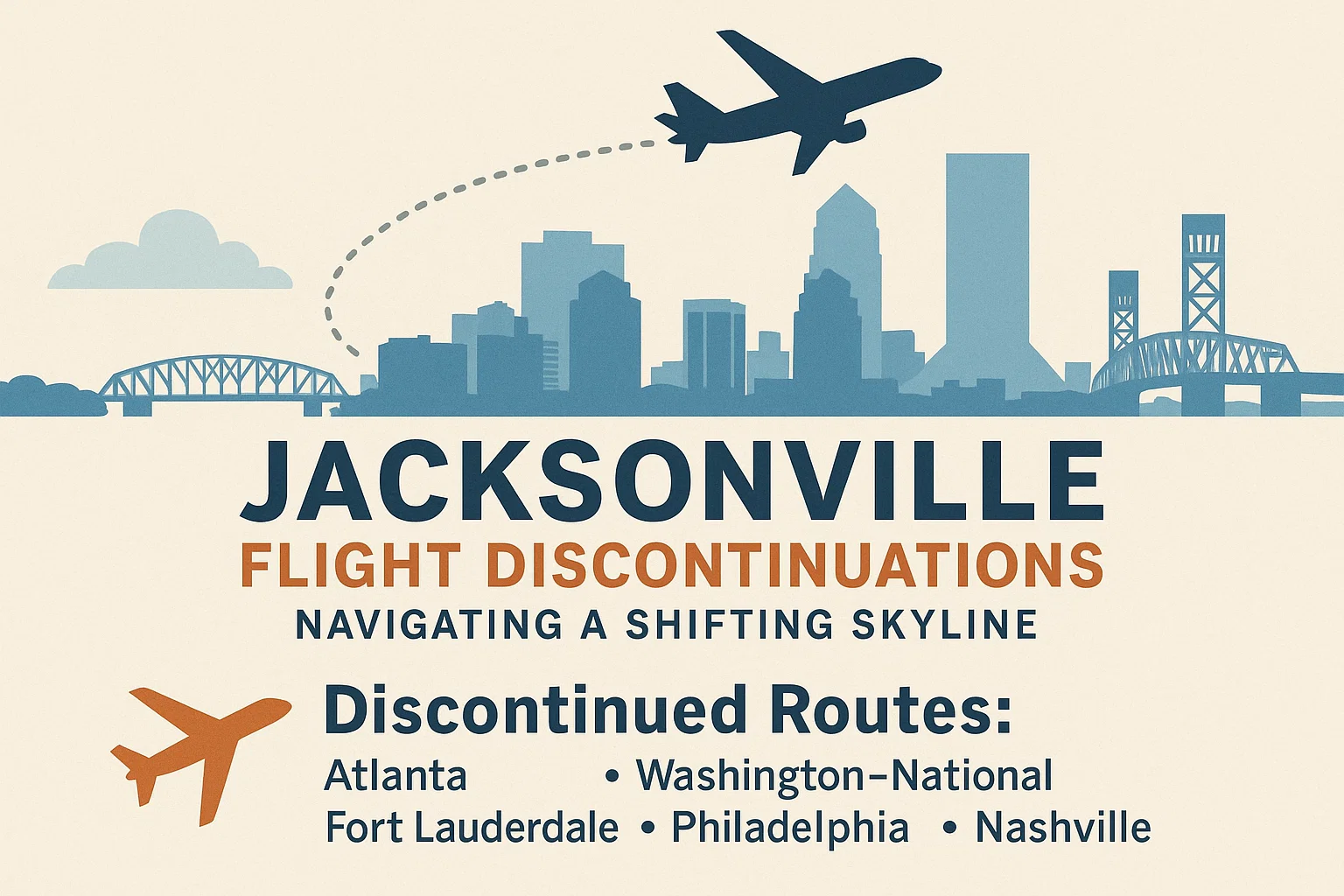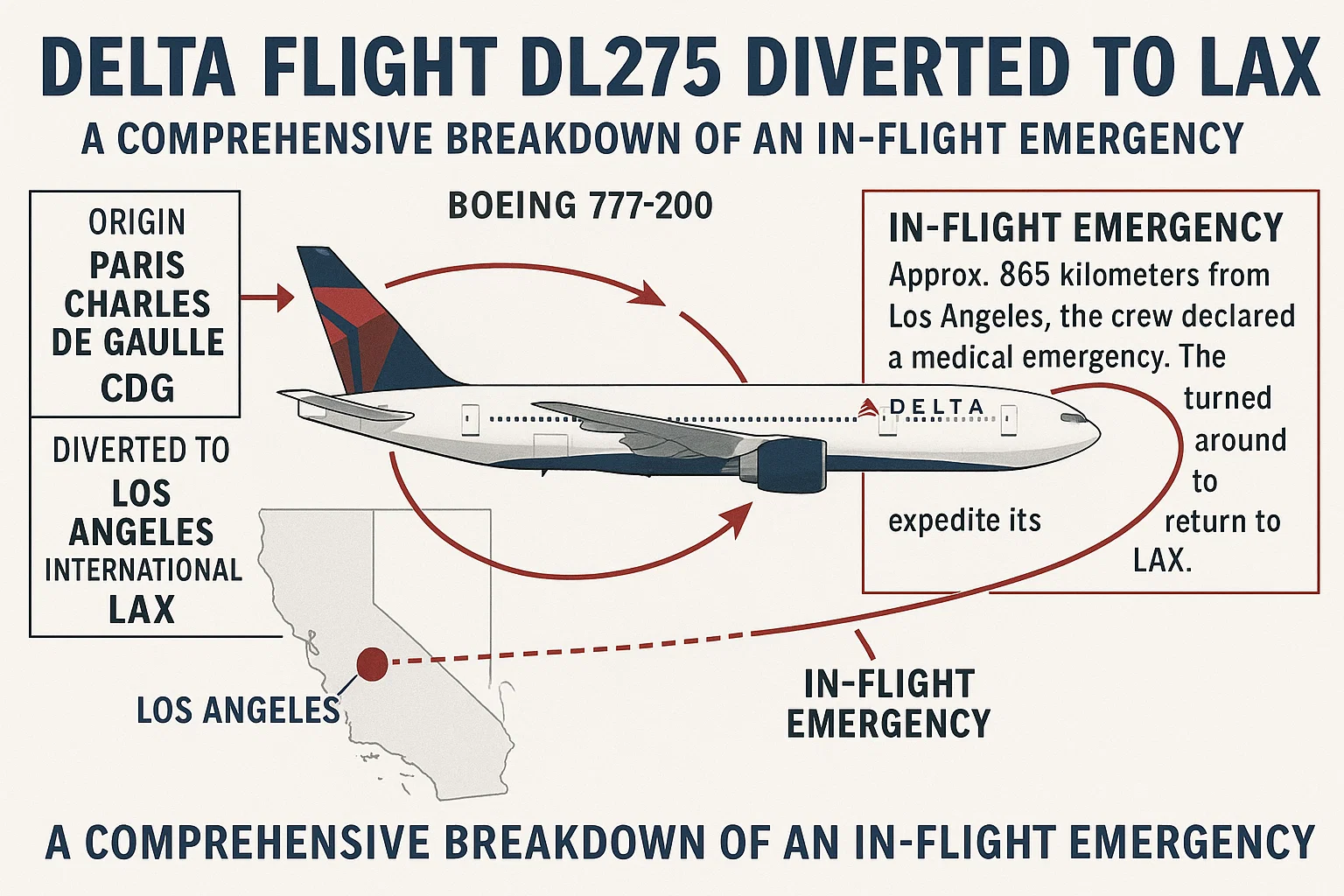Jacksonville Flight Discontinuations: Navigating a Shifting Skyline
If you’re a frequent flyer out of Jacksonville International Airport (JAX), or even just an occasional traveler, you might have noticed something shifting in the air. And it’s not just the Florida breeze. Over the past several years, the list of direct destinations from our hometown airport has seen some significant changes. Routes that were once reliable staples have quietly vanished from the departure boards, replaced sometimes by new opportunities, but often leaving behind a sense of frustration and a lot of questions. The phenomenon of Jacksonville flight discontinuations is more than just an inconvenience; it’s a complex story about the economics of aviation, post-pandemic recovery, and the evolving identity of a growing city.
This isn’t a problem unique to Jacksonville. Airports across the country, particularly midsize hubs like JAX, are experiencing similar turbulence. Airlines are constantly recalibrating their networks, moving planes to where they believe the most profit can be made. This often means consolidating operations in major hubs like Atlanta, Dallas, or Charlotte, sometimes at the expense of direct point-to-point routes from smaller cities. For Jacksonville residents, this can mean more layovers, longer travel days, and sometimes higher costs. Understanding the “why” behind these Jacksonville flight discontinuations is the first step to navigating this new landscape and advocating for a more connected future for Florida’s First Coast.
The Ripple Effect of Route Changes on Jacksonville Travelers
When an airline announces it’s ending service to a particular city from JAX, the immediate impact is felt by the passengers who relied on that route. The most obvious consequence is the loss of convenience. A direct two-hour flight to a key business or leisure destination is suddenly replaced by a five-or-more-hour ordeal involving a connection. This doesn’t just eat into vacation time; it has real implications for business travel, making Jacksonville a less attractive base for companies that require efficient national connectivity. The ease of a quick hop to Washington D.C., Chicago, or Nashville is a significant asset, and its removal is a tangible loss.
Beyond the hassle of connections, Jacksonville flight discontinuations can also lead to increased airfares on the remaining routes. Basic economics tells us that reduced competition and fewer options often give the airlines that continue to serve a route more pricing power. If only one or two carriers fly to a specific hub, they are less incentivized to offer competitive, lower fares. This financial hit affects everyone from families planning reunions to entrepreneurs trying to grow a business. The collective time and money lost by the community due to these route changes can amount to millions of dollars, stifling economic growth and limiting opportunities for Jacksonville residents.
Why Do Airlines Pull the Plug? The Economics Behind the Decision
To the average traveler, a plane that looks full from takeoff to landing seems like a surefire success. So why would an airline discontinue a seemingly popular route? The answer is rarely simple and almost always comes down to complex profitability calculations. An airplane is an incredibly expensive asset, and its potential to generate revenue is measured in seat-miles. Airlines are constantly analyzing whether each aircraft in their fleet is being deployed in the most profitable way possible. A route from Jacksonville might be moderately successful, but if that same plane could be used on a route from a larger hub that commands higher fares and has even greater demand, the corporate decision is clear: move the plane.
Another critical factor is the concept of “hub connectivity.” Major airlines like Delta, American, and United structure their entire networks around funneling passengers through central hubs. It is often more profitable for them to have Jacksonville travelers connect through Atlanta (ATL), Charlotte (CLT), or Newark (EWR) on smaller regional jets than to offer a direct flight on a larger plane. This model allows them to consolidate demand from dozens of cities into full flights on popular hub routes. Therefore, a Jacksonville flight discontinuation isn’t always about that specific route failing; it can be about optimizing a national network, even if it negatively impacts the local traveler’s experience.
“Airlines are in the business of allocating scarce resources—their airplanes—to the routes that generate the highest return. Sometimes, that means a perfectly good route gets cut because another opportunity is just 10% better.” — Industry Analyst, Center for Aviation
A Look Back: Notable Jacksonville Flight Discontinuations
Jacksonville’s air service history has seen its share of comings and goings. While the pandemic in 2020 acted as a dramatic accelerant, triggering a wave of route cuts nationwide, the trend had already begun. One of the most significant losses was Southwest Airlines’ direct service to Washington D.C.’s Reagan National Airport (DCA). This route was a lifeline for government employees, lobbyists, and tourists wanting direct access to the capital. Its discontinuation left a void, forcing travelers to either brave the congestion at Dulles (IAD) or Baltimore (BWI) or accept a connecting flight.
Another notable cut was American Airlines’ direct route to Chicago’s O’Hare International Airport (ORD). While American still serves Chicago through its hub in Charlotte, the loss of a direct flight to a major global gateway like O’Hare was a blow to business connectivity. Other routes that have come and gone include seasonal services to destinations like Las Vegas on certain carriers and various direct flights to midwestern hubs that airlines experimented with but ultimately could not sustain long-term. Each of these Jacksonville flight discontinuations tells a story of shifting demand, competitive pressures, and strategic realignment within the airline industry.
The Pandemic’s Role: An Unprecedented Disruption
It’s impossible to discuss recent aviation trends without acknowledging the elephant in the cabin: COVID-19. The pandemic brought global air travel to a near-standstill, forcing airlines into survival mode. With passenger numbers plummeting by over 90% at the peak, carriers were forced to make brutal, rapid decisions to cut costs and preserve cash. This meant parking hundreds of planes and slashing routes that were even marginally unprofitable. Jacksonville flight discontinuations were part of this massive, industry-wide contraction.
While travel demand has roared back, especially for leisure destinations, the recovery has been uneven. The structure of the airline industry was fundamentally altered. Airlines emerged from the crisis with leaner operations and a renewed focus on proven, profitable routes. Many of the routes cut during the darkest days of 2020 have not returned, as airlines have been hesitant to reinstate service they now deem speculative. The pandemic didn’t necessarily create the trend of route discontinuations, but it acted as a harsh filter, speeding up the elimination of routes that airlines were already questioning and making them more risk-averse when considering new ones.
Delta Flight DL275 Diverted to LAX: A Comprehensive Breakdown of an In-Flight Emergency
Which Airlines Are Most Active in Route Changes?
Not all airlines approach their network planning in the same way. Low-cost carriers (LCCs) like Spirit, Frontier, and Allegiant are notoriously agile, frequently adding and dropping routes based on seasonal demand, aircraft availability, and competitive dynamics. They often treat routes as experiments; if a new route between Jacksonville and a mid-size city doesn’t meet profitability targets within a few months, they will quickly reallocate the aircraft to a different market. This leads to a more volatile schedule, with Jacksonville flight discontinuations from these carriers being a common occurrence.
On the other hand, legacy carriers—Delta, American, and United—tend to make more deliberate, strategic changes, often centered around their fortress hubs. Their decisions are less about quick experiments and more about the overall efficiency of their network. A discontinuation from a legacy carrier is often a more significant indicator that a route has failed to meet long-term financial targets or that the aircraft is needed to bolster service at a hub. However, they are not immune to making cuts, as seen with American’s withdrawal from several direct routes from JAX over the years. Understanding an airline’s business model provides crucial context for why a beloved route might suddenly disappear


